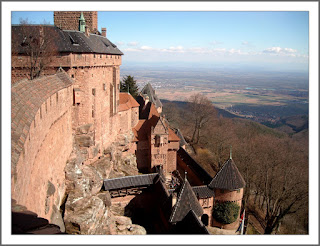Plucked out of the box at random this week is an early colour postcard of Naworth Castle in Cumbria. The card features a small vignette of (I think) Geoffrey Howard MP who was the owner of the house during the early years of the twentieth century (the house is still owned by the Howard family today). The postcard is from the collection of Great Uncle Fowler, who was living nearby in Longtown at the time, and whilst it has not been postally used, there is an inscription on the reverse. This says :
"Naworth Castle the resident of Howards, is a famous old castle not many miles of the border of England and Scotland and must have been very notorious in days 'o old of conflict with the two countries. Mr Geoffrey Howard was returned to Parliament for East Cumberland 1906"
Old postcards represent wonderful starting points for a whole variety of potential journeys : so today let us briefly explore the political context of the card. Fowler Beanland was at the height of his postcard collecting activity in 1906 so we can assume that he acquired the card and added the inscription shortly after the General Election which was held between the 12th of January and the 8th of February 1906 (elections in Britain were at the time held over a period of time in order to manage the logistics of the operation). The election resulted in a Liberal landslide and the new government of Henry Campbell-Bannerman was able to introduce a series of major political reforms that were to radically change British society. Under the guidance of a new generation of political heavyweights such as David Lloyd-George, the new Government eventually forced through laws which saw the introduction of pensions, unemployment benefits and rudimentary health insurance.
Despite his somewhat severe look and his own personal castle, Geoffrey Howard was one of the new generation of reforming Liberal MPs. He remained a Member of Parliament - with a couple of short breaks - until 1924 and, for a brief period in 1910, he served as a Parliamentary Private Secretary to the then Prime Minister, Herbert Asquith. Much of his work must have been behind the scenes in the smoke-filled corridors of power as there are relatively few of his parliamentary speeches recorded in Hansard. What there are, tend to be limited to such things as campaigns in support of the provision of Temperance Rooms in army barracks!
Naworth Castle is still standing today. If it seems familiar it may be because it has been widely used as a location for film and television productions. These days, you can visit it, have your wedding there, or host a banquet within its ancient walls. You can also make use of the wonders of Google Earth and virtually drive along the little country lane that leads from the main A69 road and passes the gates to the castle. There are worse ways to spend a cold and rainy day.











































